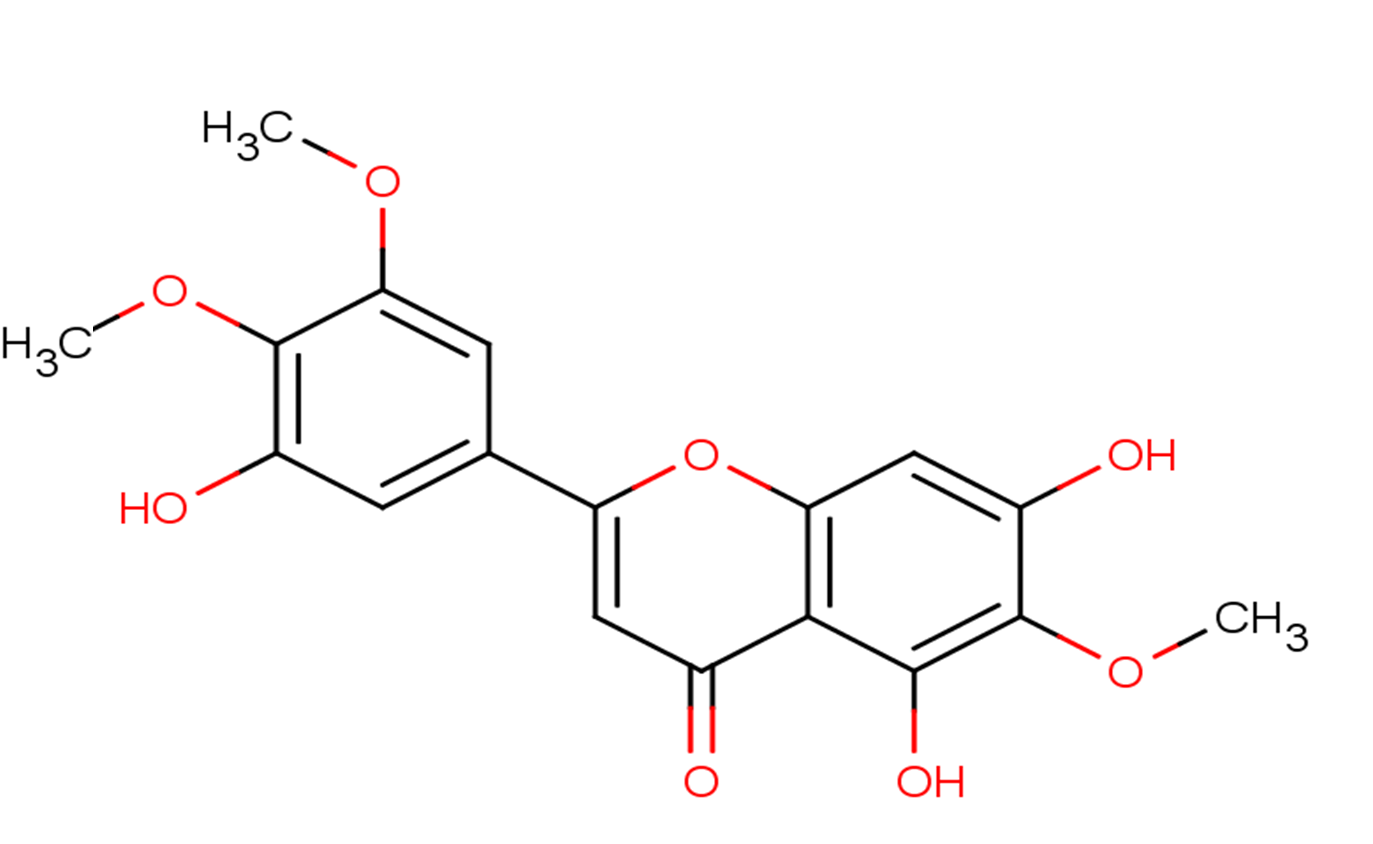
5,7,3-Trihydroxy-6,4,5-trimethoxyflavone
CAS No. 78417-26-2
5,7,3-Trihydroxy-6,4,5-trimethoxyflavone( —— )
Catalog No. M24784 CAS No. 78417-26-2
5,7,3'-Trihydroxy-6,4',5'-trimethoxyflavone is a natural product from Artemisia argyi.
Purity : >98% (HPLC)
 COA
COA
 Datasheet
Datasheet
 HNMR
HNMR
 HPLC
HPLC
 MSDS
MSDS
 Handing Instructions
Handing Instructions
| Size | Price / USD | Stock | Quantity |
| 5MG | 257 | In Stock |


|
| 10MG | 381 | In Stock |


|
| 25MG | 618 | In Stock |


|
| 50MG | 897 | In Stock |


|
| 100MG | 1197 | In Stock |


|
| 200MG | Get Quote | In Stock |


|
| 500MG | Get Quote | In Stock |


|
| 1G | Get Quote | In Stock |


|
Biological Information
-
Product Name5,7,3-Trihydroxy-6,4,5-trimethoxyflavone
-
NoteResearch use only, not for human use.
-
Brief Description5,7,3'-Trihydroxy-6,4',5'-trimethoxyflavone is a natural product from Artemisia argyi.
-
Description5,7,3'-Trihydroxy-6,4',5'-trimethoxyflavone is a natural product from Artemisia argyi.
-
In Vitro——
-
In Vivo——
-
Synonyms——
-
PathwayOthers
-
TargetOther Targets
-
RecptorOthers
-
Research Area——
-
Indication——
Chemical Information
-
CAS Number78417-26-2
-
Formula Weight360.3
-
Molecular FormulaC18H16O8
-
Purity>98% (HPLC)
-
SolubilityDMSO:10 mM
-
SMILESCOC1=CC(=CC(=C1OC)O)C2=CC(=O)C3=C(O2)C=C(C(=C3O)OC)O
-
Chemical Name——
Shipping & Storage Information
-
Storage(-20℃)
-
ShippingWith Ice Pack
-
Stability≥ 2 years
Reference
1.Further characterization of foliar flavonoids in Crossostephium chinense and their geographic variation.Nat Prod Commun. 2014 Feb;9(2):163-4.
molnova catalog



related products
-
Mitazalimab
Mitazalimab (ADC-1013; JNJ-64457107) is an FcγR-dependent CD40 agonist that targets tumors by activating antigen-presenting cells like dendritic cells (DC), initiating tumor-reactive T cells, promoting tumor-specific T cell infiltration and destruction of tumors, and remodeling the tumor-infiltrating myeloid microenvironment .
-
Saposin C18
Saposin C18
-
DAAO inhibitor-1
DAAO inhibitor-1 is a potent D-amino acid oxidase (DAAO) inhibitor (IC50: 0.12 μM).



 Cart
Cart
 sales@molnova.com
sales@molnova.com


